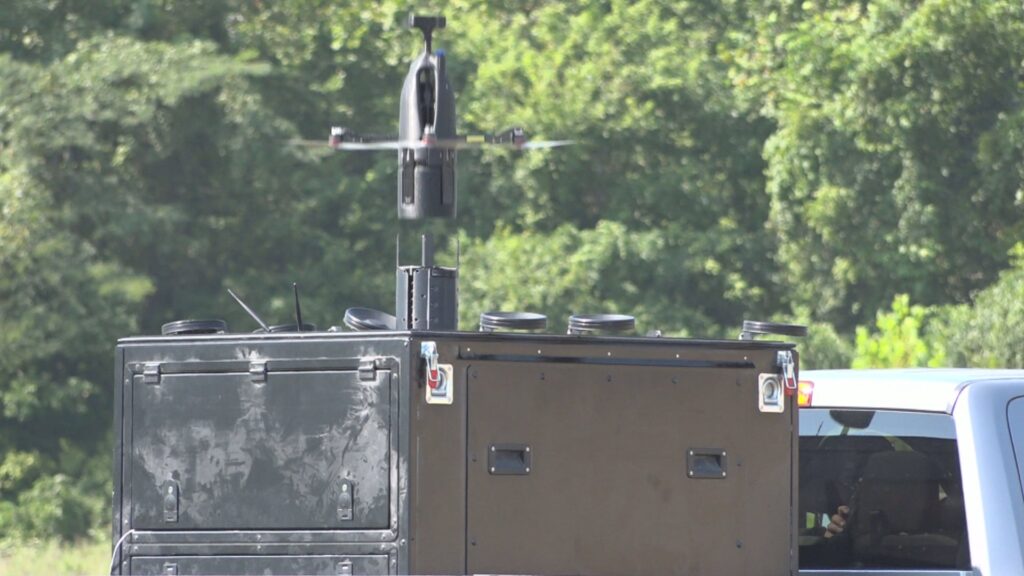Military tests new drones at Camp Atterbury
CAMP ATTERBURY, Ind. (WISH) — Senior military leaders on Thursday said technologies being tested at this central Indiana facility will dramatically change the way America fights its wars.
The military just wrapped up a 10-day technology evaluation program called Technology Readiness Experimentation 25-2, or T-REX 25-2 for short. Soldiers, Airmen and Marines tested drones, munitions, sensors and even mini web servers from more than two dozen companies in simulated combat environments. Among the accomplishments defense officials highlighted was successfully detecting and intercepting an airborne threat using only passive sensors, meaning sensors that were not actively sending out a signal like a traditional radar. Active sensors can be targeted using antiradar missiles.
Military drone technology has advanced rapidly as a result of the war in Ukraine. Notably, Ukraine in early June launched a surprise drone attack deep inside Russia that damaged or destroyed as many as 41 Russian long-range bombers. Emil Michael, undersecretary of defense for research and engineering, said the whole world is watching the drone innovations coming out of the conflict, adding sometimes new tactics or innovations emerge as quickly as every two to three weeks. He said Camp Atterbury’s large size and multiple training environments make it an ideal place to test the next generation of warfighting technology.
“It’s a new modality for warfare and that means that, where you can keep humans behind and use machines or robots, if you will, to be on the new front line,” he said. “What you have to do, if you’re doing that, is rapid innovation. And what we’re all learning from that is that innovation matters.”
Michael and other defense officials, including Indiana National Guard Adjutant General Brig. Gen. Larry Muennich, viewed a demonstration of a drone system, called Wasp, flying out of a pickup truck bed and dropping simulated explosives. They then remotely viewed two other drone systems attacking a position with both antipersonnel and anti-vehicle munitions. Col. Scott Cuomo, who leads the U.S. Marine Corps’ Weapons Training Battalion and the Marine Corps Drone Attack Team, said advances in drone technology mean the average infantry squad can now engage targets more than 12 miles away, up from about half a mile just 20 years ago using shoulder-fired missiles.
“You plot, if you’re in the Indo-Pacific, all the chokepoints of the world, and you say, what does that mean when an American ground formation, what does that mean when you go to all those chokepoints in the world and do that,” he said.
Michael said private industry as well as science and engineering programs such as those at Purdue University will be key to developing the technologies currently undergoing evaluation at Camp Atterbury. He said lessons learned from this round of evaluations will be incorporated into a third T-REX event at Atterbury later this year, which will focus more on counter-drone measures.
Recent WISH-TV coverage on Camp Atterbury
- Gov. Braun supports Camp Atterbury ICE detention facility
- Hegseth: Camp Atterbury to be used for immigrant detention
- Indiana politicians react to designation of Camp Atterbury as migrant detention center
About The Author
You may also like
-
Police searching for multiple shooters who killed 3 and wounded 9 in Brooklyn lounge
-
Sophie Cunningham gets right knee injury; out for the rest of the game
-
‘All INdiana Politics’ | August 17, 2025
-
US envoy says Putin agreed to security protections for Ukraine as part of Trump summit
-
Presidential fitness test returns to address youth health

